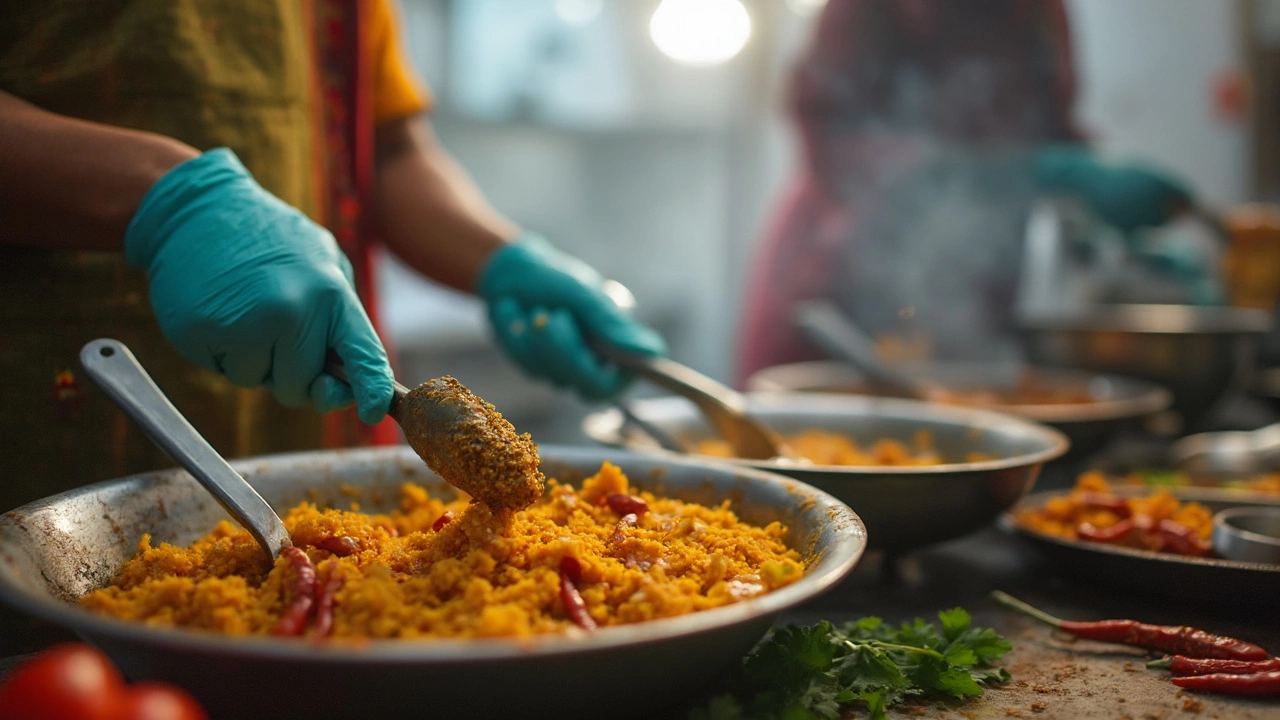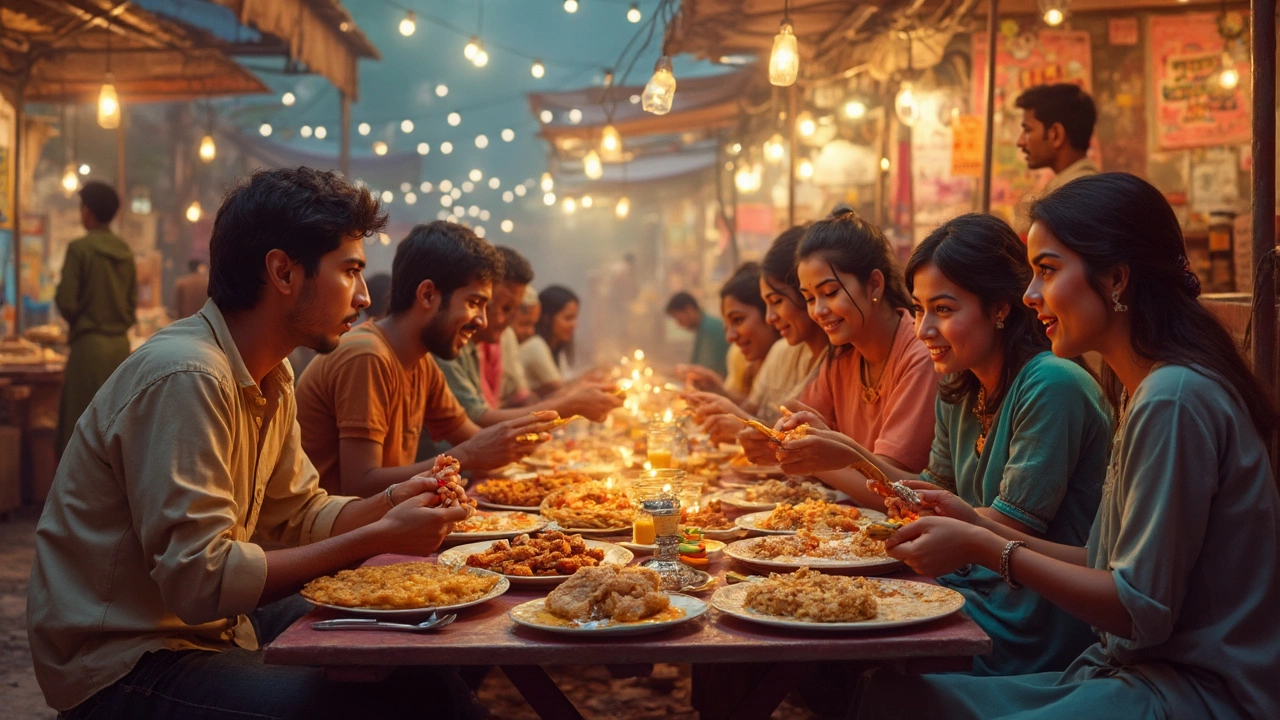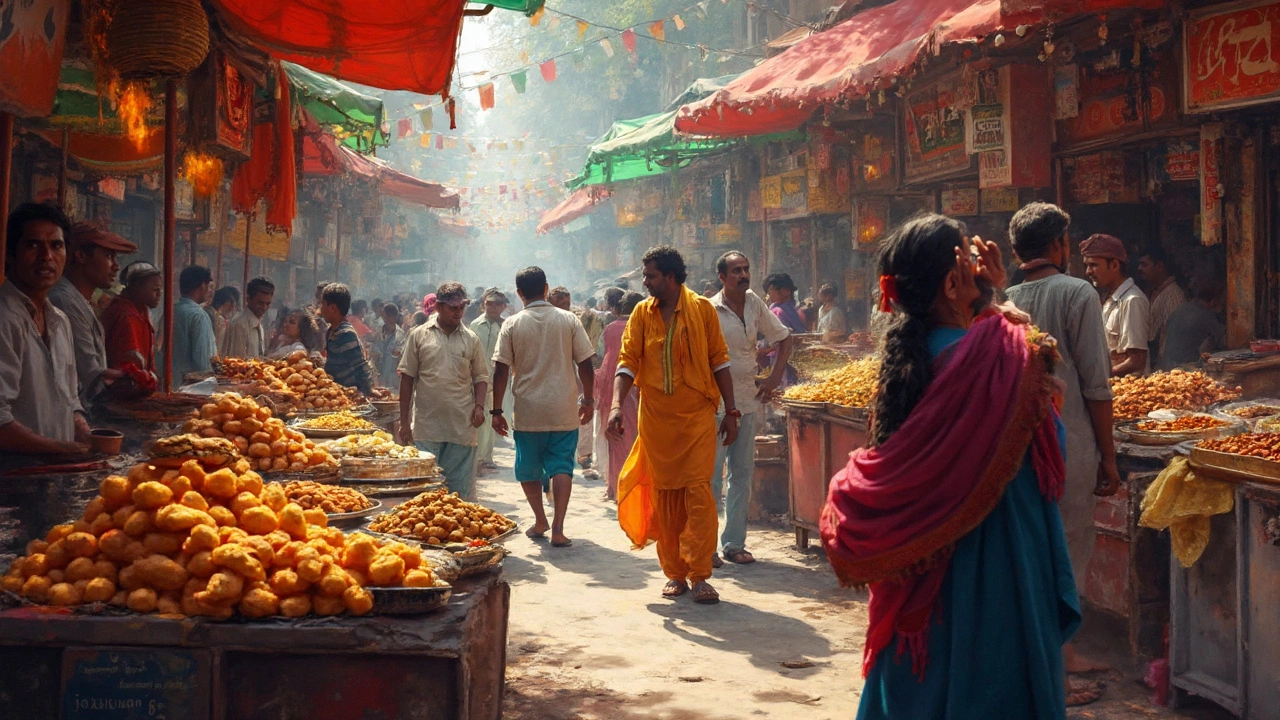Diving into India's street food scene is a culinary thrill like no other. But you might be wondering: How do I do it right? The trick lies in understanding some unwritten rules that locals swear by.
First off, trust your instincts when it comes to picking a food stall. A long line of locals is usually a good sign of quality and freshness. Don't hesitate to join them and sample what's on offer.
Now, let's talk hygiene. Always prioritize hygiene when choosing where to eat. Go for vendors who serve freshly cooked dishes, and keep an eye out for clean serving utensils and preparatory surfaces.
And, of course, you can't leave without trying some iconic dishes. Think warm vada pavs in Mumbai or savory chaat in Delhi. Each city brings its own flavors to the table, offering an array of tastes to explore.
Choosing the Right Stalls
Picking the right stall is crucial when diving into the vibrant world of street food India. It's all about balancing adventure with a pinch of caution.
One of the best indicators of quality? The crowd. If a stall has a long line of locals, that's usually a green light. Locals know where the good stuff is—after all, they've been at it for years! So, don’t shy away from joining them, even if it means a bit of a wait.
Location Matters
Stalls near busy areas like train stations or shopping districts can be hit-or-miss due to high turnover. However, stalls that are quietly tucked away but still have a steady stream of regulars can be a hidden gem.
Observe Hygiene
While sanitation is a universal concern, it’s especially crucial here. Look for stalls where the cook uses separate spoons for serving and cooking. Signs of good hygiene can also include vendors wearing gloves and regularly cleaning their areas.
Signature Dishes
Every city has its own famous street food. In Mumbai, it might be the vada pav, while in Kolkata, it's the chaat. If a stall is known for a particular dish, it's typically wise to give it a try.
Price vs. Quality
Street food is often a budget-friendly adventure. However, don't just go for the cheapest option. Sometimes, paying a little extra for a dish that's freshly made or has a great reputation is well worth it.
Remember, exploring street food is about immersing yourself in culture. So go ahead, trust your gut, follow your senses, and savor the exciting flavors India street food has to offer!
Hygiene Practices
When you think of indulging in street food India, hygiene should top your mind. Keeping a few practices in check can ensure that your experience is delightful and not dampened by health woes.
Spot Check for Cleanliness
Before you order, take a moment to observe the stall. Clean serving utensils, the presence of water for rinsing, and food being freshly prepared are all good indicators. Vendors who handle cash and food alternatively without washing hands might be best avoided.
Go for It When It's Hot
Choosing hot, piping dishes can minimize risks, as high temperatures kill most germs. Plus, who can resist a freshly made crispy samosa or steaming plate of biryani?
Fresh Crowd, Fresh Food
A busy stall means a higher food turnover, translating to fresher food. Vendors bustling with activity usually have ingredients that haven't been sitting out for long and are a safer bet.
| City | Common Street Food | Best Time |
|---|---|---|
| Mumbai | Vada Pav | Lunchtime |
| Delhi | Chaat | Evenings |
| Kolkata | Puchkas | Late Afternoon |
Use Your Hand Sanitizer
Always keep a bottle of sanitizer handy. Many street food dishes are eaten with hands, so having a clean set of fingers makes the eating experience more pleasant and less risky.
Following these eating rules India not only enhances your street food adventure but also keeps your health in check, making it truly memorable.

Must-Try Dishes
When it comes to street food India, the variety is as vast as it is delicious. For anyone embarking on this flavorful journey, there are some dishes that simply can't be missed.
Vada Pav
Often called the Indian burger, the Vada Pav is a beloved staple in Mumbai. Imagine a spicy potato fritter nestled between slices of a bun, generously smeared with tangy chutneys. It's affordable, filling, and packs a punch. Make sure to grab one from a busy stall for the best experience.
Pani Puri
Pani Puri is a deliciously messy affair. These small, hollow semolina balls are filled with spicy, tamarind-based water. Eating them is almost a sport; you have to consume them in one bite before they burst. The blend of textures and flavors is something every foodie should experience.
Chole Bhature
This is a North Indian classic you’ll find in many street-side eateries. It consists of spicy chickpeas (chole) served with fluffy fried bread (bhature). Perfect as a breakfast or lunch option, it’s as hearty as it is scrumptious.
Masala Dosa
From the south comes the Masala Dosa—a thin, crispy crepe made from a fermented batter of rice and dal, filled with a gently spiced potato mash. Usually served with chutneys and sambar, it’s a must-try for those exploring Indian cuisine tips.
- Eating Tip: Always check the crunchiness of the dosa—it's the hallmark of quality.
Kebabs
For meat lovers, Indian kebabs are a revelation. Juicy and flavorful, you’ll find different varieties across the country. From succulent seekh kebabs to spicy chicken tikka, there’s something to please every palate.
Iconic Sweets
| Sweet | Description |
|---|---|
| Jalebi | Deep-fried swirls soaked in sugar syrup. |
| Gulab Jamun | Soft, milk-based balls soaked in rose-flavored syrup. |
Sweets might not be your usual street food, but Indian desserts are worth every bite. Whether it’s the syrupy jalebi or rich gulab jamuns, remember to leave room for these indulgences.
Remember, street food in India isn’t just about eating—it's about the experience, the ambiance, and the stories each dish tells.
Cultural Etiquette
In India, food is more than just a meal—it's an experience steeped in tradition and cultural nuances. So, if you're diving into the street food India scene, being aware of the cultural etiquette can enrich your experience and help you blend in like a local.
Eating With Hands
One thing you might notice is that many Indians eat with their hands. It's a practice rooted in culture and practicality, especially with foods like parathas or chaat that have their own textures and forms. If you're trying this, remember to use your right hand, as the left is often considered unclean in traditional settings.
Queuing Up Isn’t Always a Thing
Unlike Western countries, strict queues might not always be followed at bustling food stalls. It’s more like a ‘controlled chaos’ where everyone seems to know their place. Patience and politeness work best here as you await your turn to savor those crispy pakoras or piping-hot samosas.
Sharing Is Caring
Indian culture places a strong emphasis on sharing food. It's not uncommon for locals to offer you a taste of their dish when they're getting something delicious. Accepting a taste is both a compliment and a way to make friends. Feel free to reciprocate, keeping the joy of food exploration mutual.
Respecting Religious Sentiments
Given India's vast cultural diversity, be mindful about meat consumption in different areas. For instance, some regions or outlets might lean vegetarian, especially around religious places. Always feel free to ask vendors for what's in a dish if you're unsure.
Bargaining? Save It for Markets
Although bargaining is common in many Indian markets, street food prices are usually fixed. Haggling over food isn't part of the norm and can be considered rude—it's best to respect the vendor's pricing.
Embracing these unwritten cultural etiquettes as you try out Indian cuisine will not only enhance your food journey but will also make it much more enjoyable and respectful for everyone involved.

Eating Safely
You've got your taste buds ready, but staying safe while tackling India's vibrant street food scene is key. Let's jump into some practical tips to help you relish those delights confidently.
Hydration: The Right Way
While the dishes are tempting, think twice about the water. Opt for bottled water, and ensure the seal is intact. Even better if you can grab a popular branded one – reduces risks big time. And for those who love chilled drinks, checking the ice source matters!
Food Freshness: A Must
Remember, hot and sizzling is your safest bet. Stick to places where food’s cooked right before you. If something's been sitting around for hours, it might invite more than just taste.
Avoiding Trouble: Ingredients to Watch
Street dishes often come with a flurry of spices and flavors. But, if you spot raw salads or chutneys, proceed with caution. These can harbor bacteria if vegetables aren't washed properly.
Know Your Stomach
The transition can be tricky. If you're new to Indian street food, start slow. Perhaps sample one or two dishes at first, then see how you cope. Just like building up stamina, your tummy might need a warm-up too!
Quick Tips
- Watch the stall's popularity. Popularity often mirrors quality.
- Carry basic meds for tummy issues, you know, just in case.
- Choose stalls with clear and clean surroundings.
Keeping these simple tips in mind, you can enjoy your street food adventure without worries. Here's to safe and delicious explorations in the world of street food India!
